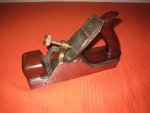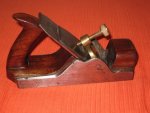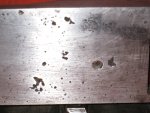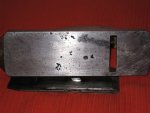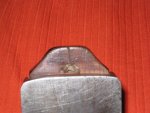Toni Ciuraneta
Member
- Messages
- 5,629
- Location
- Catalunya
Some weeks ago I got this plane quite cheap at e-bay, as it is of unknown brand and has some severe pitting or holes the bids where low.
It seems to have been repaired with not much fortune, the tote is cracked and I think that the previous owner dismantled it and inserted a screw from the bottom.
The sides are more or less OK but the sole has these big holes.
So here is my dilemma:
Should I try to fix and restore it or leave it like that.
What do I do with the holes, braze them, fill them with metal expoxy filler or I try to fill them by welding?
As I have acces to a lapping machine I can leave the surfaces completely flat but the holes will remain.
And if make new rivets I will need to protect the wood somehow if I have to lap the sides to leave the rivets flush, because the lapping machine uses drilling oil.
Any hint clues or suggestions are welcome.
It seems to have been repaired with not much fortune, the tote is cracked and I think that the previous owner dismantled it and inserted a screw from the bottom.
The sides are more or less OK but the sole has these big holes.
So here is my dilemma:
Should I try to fix and restore it or leave it like that.
What do I do with the holes, braze them, fill them with metal expoxy filler or I try to fill them by welding?
As I have acces to a lapping machine I can leave the surfaces completely flat but the holes will remain.
And if make new rivets I will need to protect the wood somehow if I have to lap the sides to leave the rivets flush, because the lapping machine uses drilling oil.
Any hint clues or suggestions are welcome.

